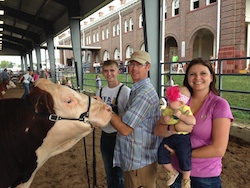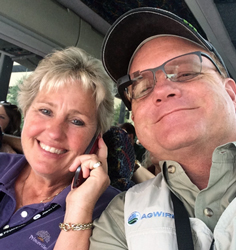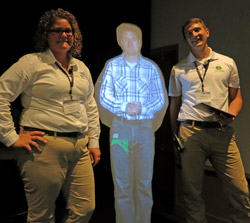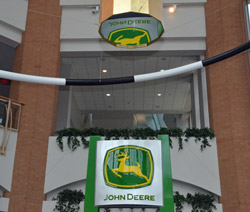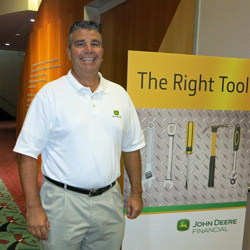 During the John Deere product launch taking place in Milwaukee, WI, I visited with Bill Weber who told me that not all the announcements are “new.” By that I mean we talked about the new John Deere Certified Pre-Owned Equipment program.
During the John Deere product launch taking place in Milwaukee, WI, I visited with Bill Weber who told me that not all the announcements are “new.” By that I mean we talked about the new John Deere Certified Pre-Owned Equipment program.
John Deere introduces a new Certified Pre-Owned (CPO) Equipment program to assist customers looking for field-ready used machines with the latest technology to increase overall productivity for their farm or business operation.
“Some customers have not upgraded their machinery fleet in a few years and the Certified Pre-Owned Equipment program will allow them to trade up to later model machines with new technology,” says Bill Weber, division manager, remarketing, John Deere. “Typically, these machines have better fuel economy, comfort, convenience, and the latest technology to provide exceptional value to customers wanting to enhance and improve their overall equipment line-up.”
Every Certified Pre-Owned tractor or combine is covered by a comprehensive PowerGard™ Protection Plan that provides extra value and cost-of-ownership effectiveness. All main components are covered including engine, transmission, final drives, hubs, steering components, electronics, hydraulics, cab, and air conditioning. There are some deductibles and John Deere dealers will have more detailed information about the PowerGard coverages.
“No one else offers a low-hour used machine that’s been field tested, inspected and certified on over 170 points for tractors and 200 points on combines,” says Weber. “Plus, customers will have the peace of mind to know that these machines are covered with one year of PowerGard protection.”
All Certified Pre-Owned machines will also receive a free one-year subscription to JDLink™ which monitors machinery location and performance, tracks fuel usage, and manages and protects equipment from a laptop, desktop, or mobile device.
You can listen to my interview with Bill here: Interview with Bill Weber
2015 John Deere Product Launch Photo Album
 Besides having the media in for John Deere’s product launch, dealers and others came for information and training on all their new equipment rolling out. Chuck’s first interview for the event was with Dave Guetterman who specializes in John Deere’s 9R and 9RT.
Besides having the media in for John Deere’s product launch, dealers and others came for information and training on all their new equipment rolling out. Chuck’s first interview for the event was with Dave Guetterman who specializes in John Deere’s 9R and 9RT.

